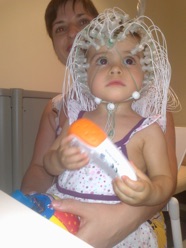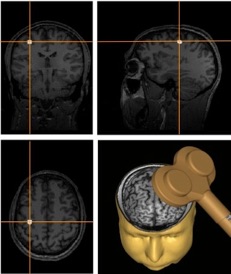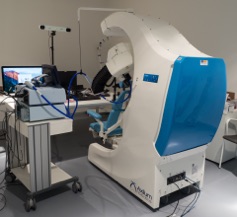Attention and Consciousness
We are interested in exploring how our conscious perception is modulated by different attentional subsystems, such as spatial orienting, alerting, or executive control. By manipulating different attentional mechanisms and exploring their effects on conscious perception, we aim at better understanding how information is selected from our crowded environment to create our conscious experience.
We pay especial attention to the brain mechanisms subserving the attention and consciousness interactions, and explore attentional mechanisms and conscious perception in brain damaged patients and in healthy controls using fMRI and TMS.
Endogenous and exogenous attention
Orienting of attention in space can be controlled either endogenously (which is also known as top-down or voluntary attention), or exogenously, by external stimulation (bottom-up, involuntary stimulus-driven attention).
In this line of research we explore the conditions where these two mechanisms are independent, produce different effects on information processing, and are supported by partially different brain regions.
IOR has been considered as an attentional mechanism produced by the inhibition of the return of attention to a previously attended position. We have consistently demonstrated that IOR is independent of the endogenous orienting of attention. We alternatively propose that IOR is produced by a detection cost when two stimuli are presented at the same spatial location. Using ERPs we have demonstrated that IOR is always related with early P100 modulations, although there is no single neural marker for IOR. In discrimination tasks, for example, the modulation of the other components (such as the N100, Nd, N2pc, or P300) determines whether facilitation or IOR will be behaviourally measured.
Spatial attention and Inhibition of Return (IOR)
Research facilities
Our lab includes a wide array of research tools, including a research-dedicated Siemens 3T MAGNETOM Verio, TMS equipment with neuro-navigation and a robotic system, BIOPAC, eye-tracker, and high density EEG.




Financed research projects





2012-2017
Spatial attention as a gateway for conscious perception: exploring functional and neuro-anatomical mechanisms. Financed by: Ministerio de Ciencia e Innovación, Spanish Government.
2015-2017
Fronto-parietal contributions to conscious perception (PSI2014-58681-P). Financed by: Ministerio de Economía y Competitividad.